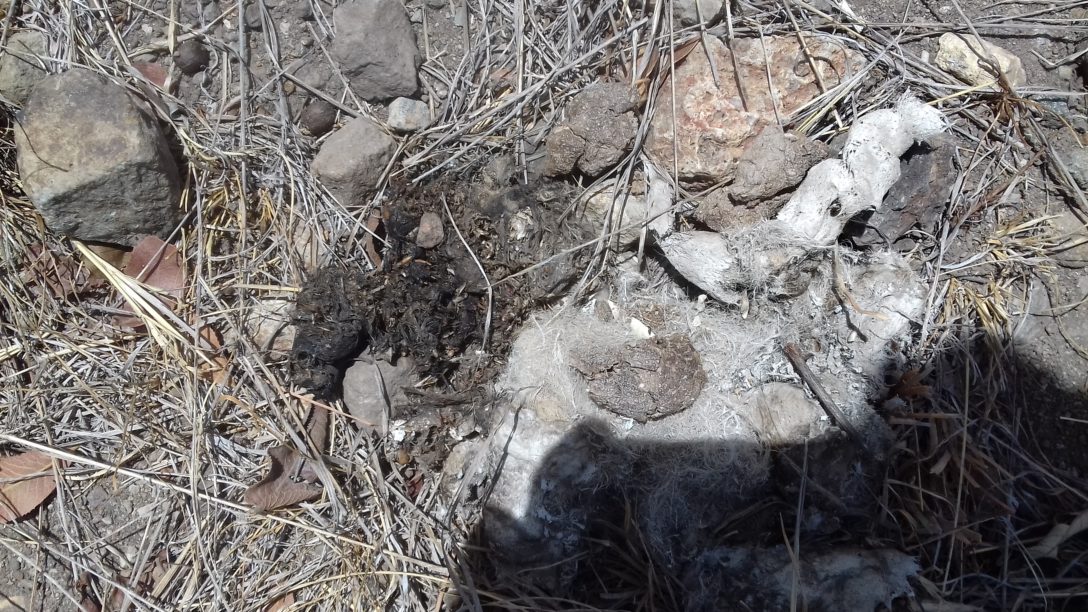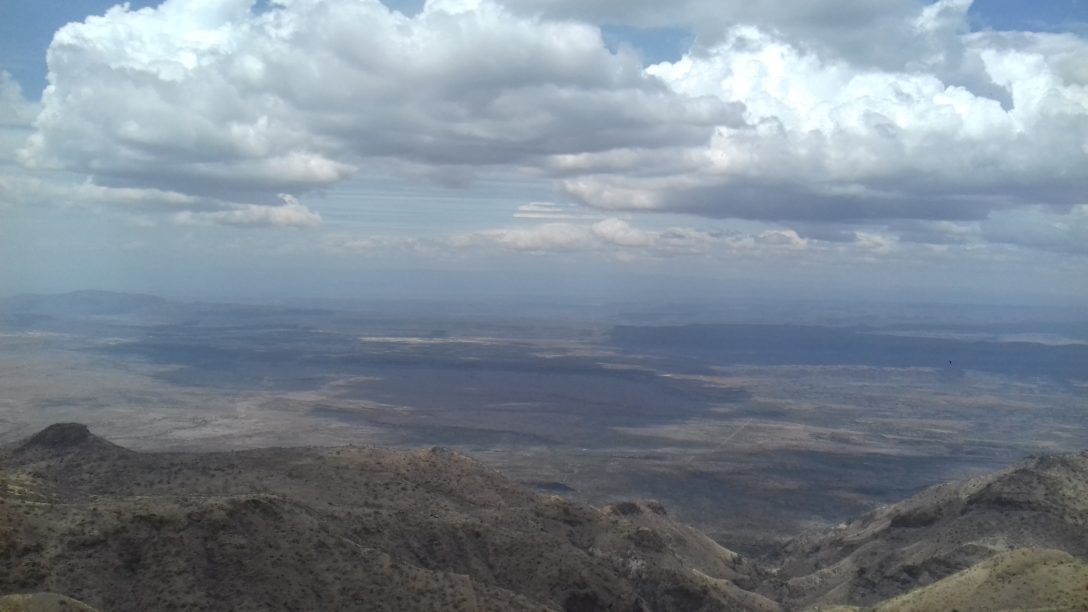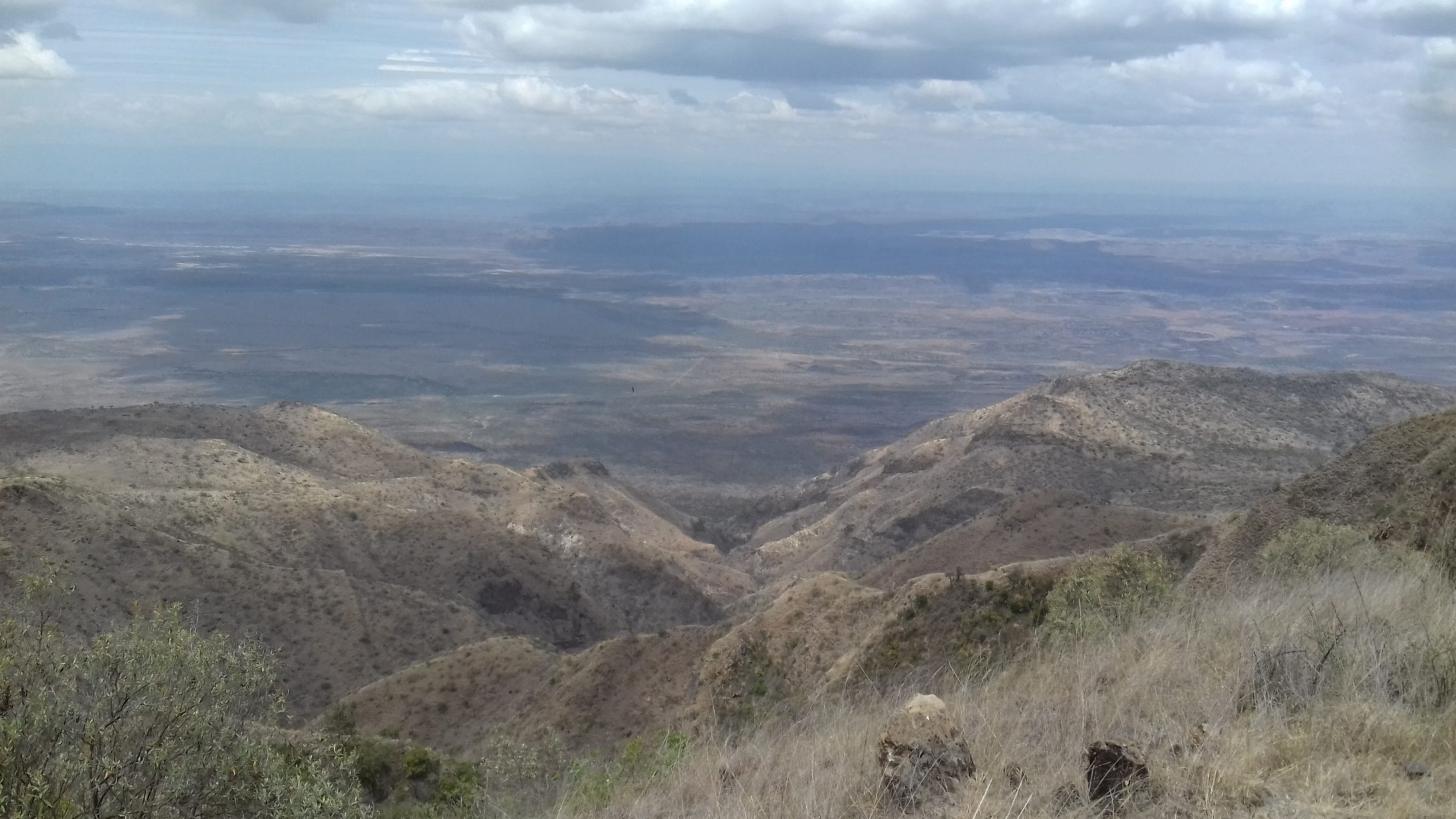The journey to Oloroka started at a petrol station in Kitengela Town, where my two experienced hiker friends were waiting. I was late because I had underestimated the time it would take for the matatu I was taking from Nairobi to fill up with customers before leaving for Kitengela. Our guide joined us and then directed us to our destination. Along the way, the guide told us that just a few months ago, the Chinese contractors working on the road and railways projects had been based here. He complained that they didn’t buy anything local—everything they ate came in containers all the way from China. He also pointed out fenced land which he said had recently been purchased by politicians and government officials.
We stopped at the plaque marking where JM Kariuki’s body was found on 2 March 1975. None of us on this trip had been born when JM Kariuki, who’d been reported missing, was finally found at this site. It is a story that we’ve all grown up with. As we recounted details we had gleaned from reading books and listening to older Kenyans, it felt as though we had been alive to witness the tragedy and its aftermath. Maybe the story felt familiar because there are many other similar stories about Kenyans in our lifetime, who disappeared like this, and then got found dead in the locations considered as some people’s nowhere. Locations that were abandoned or only visited by herders. It’s possible to organise a macabre tour of places where bodies of missing people were found.
As we were leaving, two other hikers stopped by this marker. They told us that they were President’s Award assessors checking on a group of students who were in the area, walking and learning to find their way on their own. Learning how not to get lost in the middle of nowhere. I thought about the irony of it at this particular spot. We got back in the car and drove to a house where we parked the car. At the start of the hike, we could see the wind turbines on Ngong Hills behind us. Unlike Ngong Hills which is guarded by the Kenya Forest Service rangers, Oloroka Range is on community land and our guide is also from the local community.
It was late in the morning and hot and I wondered if I had enough water. My experienced hiker friends had hydration packs—all fancy with straws—just sticking out of their backpacks. I, on the other hand, had two branded bottles sourced from conference freebie bags. They teased that my choice of bottles demonstrated my inexperience as a hiker. I had carried my zinc and castor cream, my low-cost substitute for sunscreen. I slathered it on my face, neck and arms. It is thicker than body lotion and I felt it melt and drip off my chin almost immediately. My most recent hike had been at the Ngong Hills which had felt crowded but this one already promised to be quiet in comparison. There were no other people around us.

At first all we saw were mounds of cow dung and goat droppings, stones, whistling thorn trees, and different shrubs. The guide told us that we’d make three stops and that the hike to the summit called Ole Sekut and back might take about five hours. We stopped to taste some tiny berries from a shrub. They tasted like guavas. We rubbed leleshwa leaves on our skin after learning that they were used as deodorant.
As we went along, the guide pointed out markings on the soil—they looked like ordinary lines, nothing special. But he told us they were animal prints and then asked us to guess which animal they belonged to. After we guessed wrong multiple times, he told us they were monkey footprints. We continued walking and then stopped when he identified hyena footprints. I worried we’d be encountering hyenas, remembering that quite recently a child in Laikipia had been mauled by a hyena. The guide assured us that that was unlikely.

More steps ahead we stopped to look at scat. We repeated the guessing game, this time confirming that it was hyena scat. We learnt that it was white because hyenas eat and digest everything and so it comes out refined. I was fascinated. From this point our hike turned into a treasure hunt for different types of animal poop. We took pictures of some of the droppings we observed. We compared the different qualities. Big, medium, scattered, or piled one place. We joked about creating a book Vinyesi vya Wanyama, titled in Swahili because that consonance and assonance made it catchy. The book would have high resolution photographs of different types of scat and dung. For tourists of course.
I learnt that elephant dung is packaged and available for sale at OR Tambo Airport in South Africa. We wondered if this was something we could also try doing. But we only encountered poop from less newsy types of animals—dikdiks, elands, hyenas, and zebra. None of the big five. This would be a marketing challenge. We learnt that dikdiks tend to poop in the same place and so their dung mounds appeared to have more dung. And then we saw leopard scat. This one was distinct for its furry content from animal skins that couldn’t be digested.
We walked past rock formations which appeared to have eroded in geometric shapes. They looked as perfect as the wall paper that mimics rocks. From this position we could see someone far ahead watching over his cows. We got to a spot which the guide said had been featured in a popular television advert with a song that we all liked. We started singing the song from that advert. It was just cheesy. It was fun. We posed for group photographs and would have spent more time there if we hadn’t been promised better views ahead.

At Ole Sekut we could look down on the undulating slopes. The flat ground further away was white, brown, and green patches. Beyond these patches, Lake Magadi was visible. Magadi and Olorgesailie have always seemed so far away from Nairobi but I’d woken up and was on a hill looking at them. We set down our bags and had our lunch under a thorn tree while staring at our surrounding. It was as if, a person standing at the edge of the hill we were sitting on could tip over and roll all the way to the flat ground below with the white patches. If it wasn’t for the evidence of wild animals along the trail I might have tried to stay longer. Our next destination was a cave along our descent from Ole Sekut.
The cave was big enough for all of us to enter so we got in. I felt claustrophobic because caves are only exciting in novels or in survivor situations. It was still daylight and there was no reason to linger at this cave. The walk back to the parked car was on a different side of the range. We spotted two grazing elands which ran away startled by our presence. We got to a place that looked like someone had dug the soil and then planted neatly spaced out rocks just to make the downward descent extra difficult. Then there was another neglected project. Our guide joked that a foreign donor had provided for the construction of a dam but nothing happened after a groundbreaking ceremony where drilling equipment was photographed and a little digging was done as evidence that work was ongoing. What was left was a shallow pit filled with silt.
Driving away from Oloroka our last wild animal sightings were a dikdik and a squirrel. We passed a small trading centre, a few shops, that had been quiet and empty in the morning but was now lively with activity. The shops were open and there was a loud speaker set up where and a preacher man stood surrounded by a group of women. They had their heads bowed in prayer. We drove past the land that we’d earlier been told belonged to politicians. We got back onto the road to Kitengela town and left the guide at a petrol station. There wasn’t much traffic but the change from empty and quiet hills to crowded Kitengela and then even more crowded Rongai town made it feel we’d been in another country. Two Rongai matatus, driven facing the wrong side, cut in front of us, but it was nothing dramatic. Just irritating. I got home before it started raining.
Lutivini Majanja






